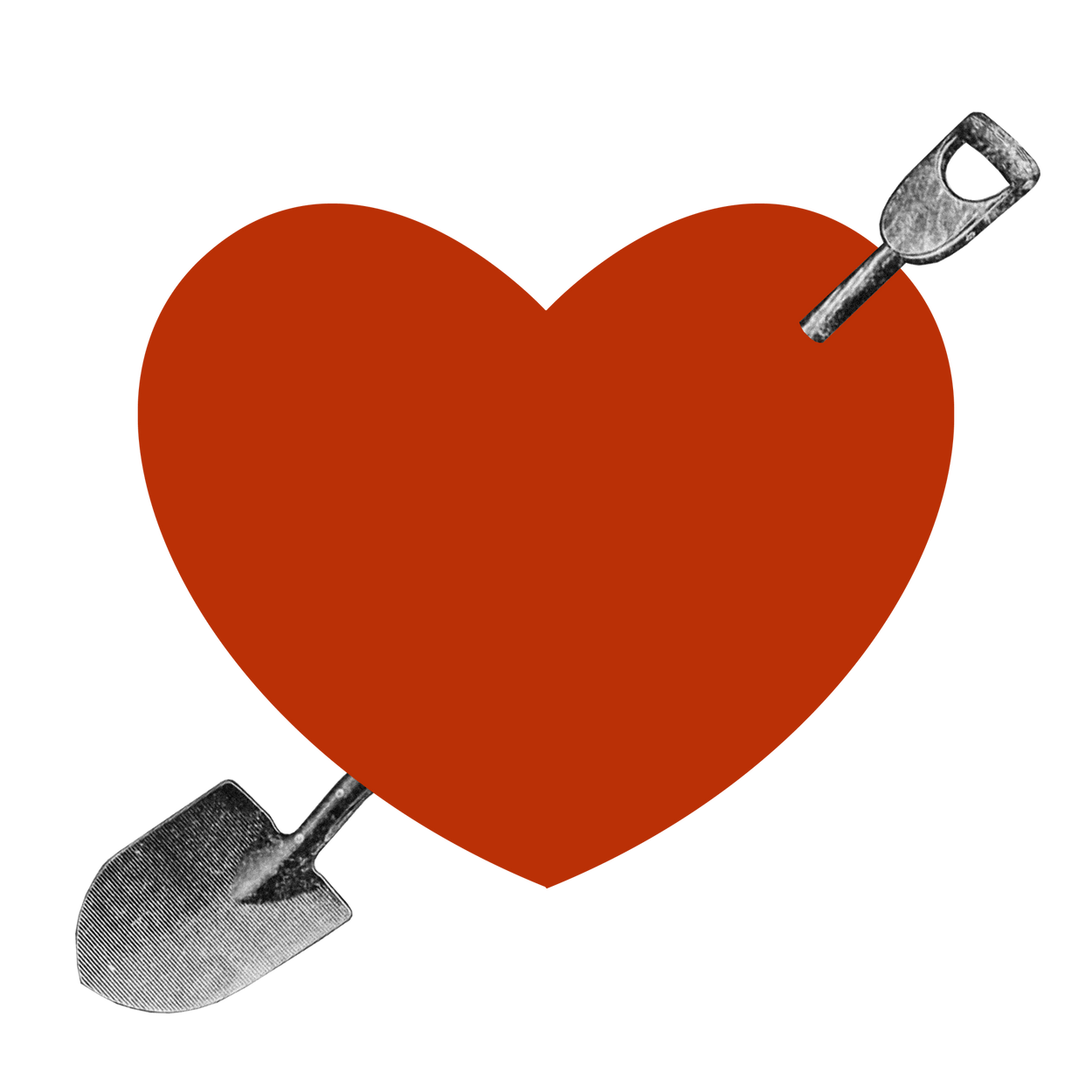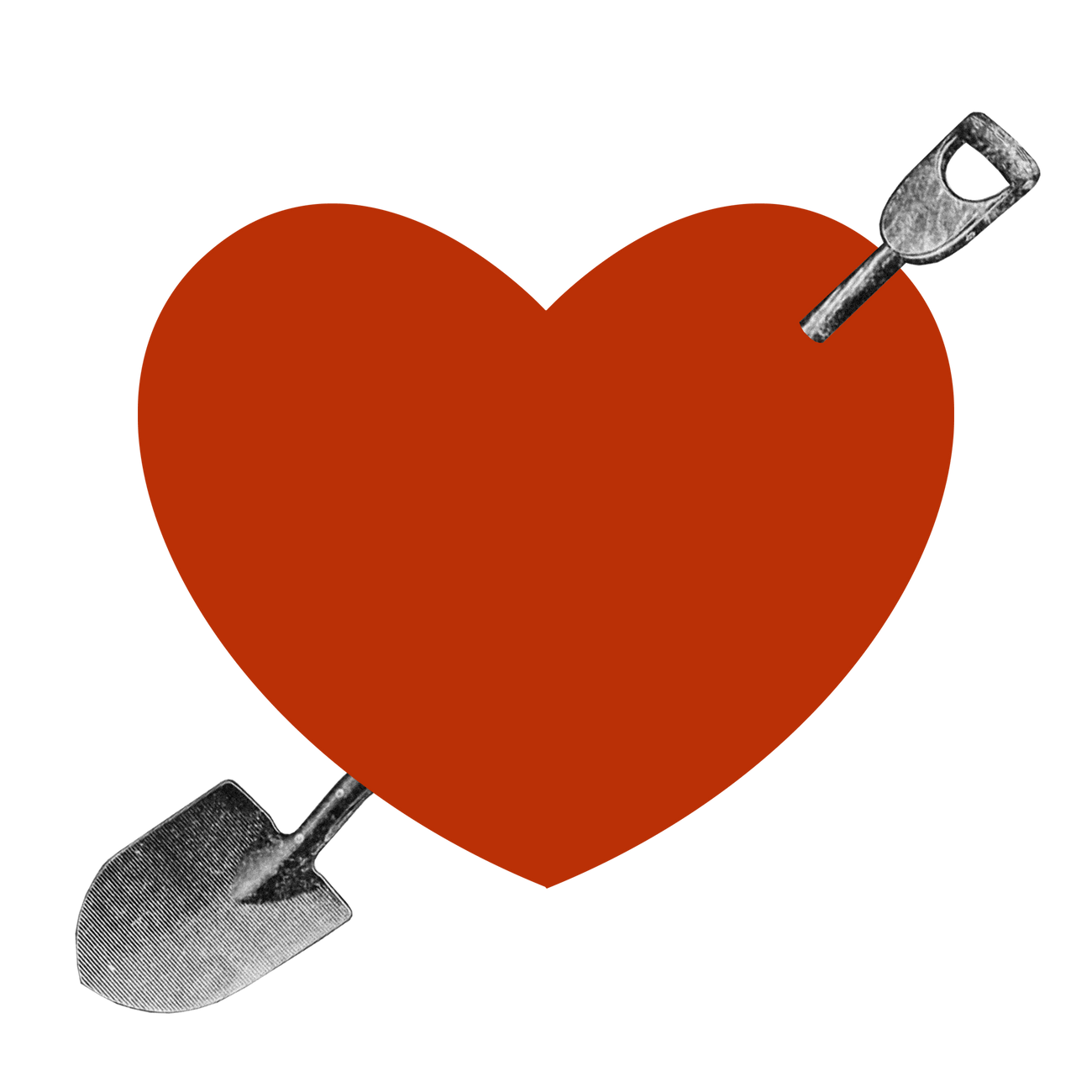The First Glimmer of Healing
A graveside ritual helped me work through my grief over my father’s death




The Reform Jewish funerals I’ve attended typically begin with prayers at a synagogue and continue with blessings at the graveside. Toward the end of the ceremony, the rabbi offers mourners the chance to shovel dirt onto the casket.
Each time I’ve done this has been gut-wrenching. The dirt clods land on the wood with a terrible rattle that reverberates long after the sound waves fade, each thud sparking a fresh spasm of grief. The shoveling is symbolic, meant to force the acceptance of loss, but the dirt clods make me think of the rotting corpse, not the human who inhabited it. I understand the ritual is meaningful for some. To me, it’s pantomime.
I’ve found leaving a body in a deep, nearly empty hole feels creepy and incomplete. But when I’ve lingered to watch strangers finish the job—cemetery workers using heavy machinery—I’ve felt uncomfortably voyeuristic. I’d never resolved this dissonance, never found closure at a gravesite. At least, not until my dad’s death late this spring.
The familiar process—synagogue, then cemetery—unfolded around me as we gathered for Dad’s funeral. He was an informal person, and I did not feel his presence in the formal proceedings. I actually felt like I was floating apart from the crowd, in my own personal grief bubble.
At the cemetery, I stood beside my mom and my sisters as a winch lowered my father’s casket into the ground. Across from us was a mound of soil with three shovels stuck in it. The rabbi led us in prayer, then invited us to sprinkle dirt onto the casket before leaving.
Then he said that anyone who wanted could stay and fill the grave.
I’d never been given that option before, and I didn’t need to think about it. Taking on this somber responsibility felt correct. Shifting from symbolism to service, using my own hands to fully inter my father’s body, seemed an act as comforting and natural as his turning on my nightlight before I fell asleep.
My oldest son stepped forward, tucked his tie into his shirt, and got to work. A gray-haired aunt walked over to dig beside him. I took up the third shovel and sunk the blade into the pile. Dirt scattered across my open-toed shoes.
And we shoveled.
Using my own hands to fully inter my father’s body, seemed an act as comforting and natural as his turning on my nightlight before I fell asleep.
Without speaking, we settled into a rhythm. Every few minutes, a shoveler would straighten, turn, and hand the tool to a waiting mourner. My brother-in-law worked with a frightening intensity, crying and swearing. My daughter plucked shreds of plastic bags from the mound, so Dad wouldn’t be buried with trash. My sister squatted by the grave, bearing witness in silence.
By the time we’d filled a quarter of the hole, circles of people began to form and break apart, strangers introducing themselves via their connections to Dad. “Architecture Committee at the condo.” “Sunday breakfast at shul.” “Third cousin on your mother’s side.” These snippets from my father’s life poked at my grief bubble, but it didn’t pop.
And we shoveled.
On my fifth turn, I pushed my dampened hair off my forehead, then leaned forward to address Dad directly. “I can’t believe it. It’s a Sunday, and you’re still making me do yard work.”
My sisters laughed, remembering how much our dad liked his routines. I pivoted between the pile and the grave, bending my knees to protect my back. When sweat began to trickle beneath my dress, I gave my cousin a turn.
When the grave was half full, the pile of dirt was half empty, and we realized we had a problem. We’d shoveled the dirt closest to the grave, exposing about four feet of grass between the hole and the remaining mound. The length of the gap meant taking multiple steps with each load. The motion was awkward and ruined our cadence.
“Gotta dig from the back,” my cousin said. An aunt moved behind the hillock and began relaying dirt forward, so another mourner could heft it into the hole.
Was it the shift in focus from grief to problem-solving that began to dissolve my solitary bubble? Exercise endorphins kicking in? I don’t know. But soon, my shoulders loosened up. My sisters and I started tossing around some of Dad’s signature catchphrases along with the dirt, while my son heckled my nephew’s filthy slacks.
And we shoveled.
By the time the grave was three-quarters full, I was hungry, and my feet itched. A torrent of guilt washed over me. How could I think about a bagel and a shower while I was literally burying my dad?
Yet I also sensed the first glimmer of healing. Within the hour, I knew, I would drive off and leave my father’s body where it lay. My life would go on. His death, this shoveling, would be part of that.
Eventually, the hole was no longer a hole. My niece used the flat of the blade to smooth the grave’s surface, tucking Dad in as she whispered her goodbyes. After she set her shovel against a tree, people turned toward their cars. I looked from the plot to the cars and back again, panic rising.
“Don’t go,” I blurted. Everyone froze. I pointed at a 2-inch-wide, 5-foot-long stripe of soil trailing between where the pile had been and the graveside. “Dad would hate that. He would never leave a project undone.”
My family knew I was right, and with the faintest of smiles, they returned to the site. My nephew, my sister, and I tidied the last bits of dirt. Before I turned to go, I nodded to the grave my heart full of an acceptance far greater than I’d expected: My life is a continuum, not a bubble. And no matter how tight or tenuous our connections, I’m forever bound to those with whom I worked that afternoon, linked by our shared humanity.
As I left the cemetery, I heard Dad boom one of his catchphrases, as if he were walking beside me: “Job well done.”
Amy L. Freeman’s work has appeared in The Washington Post, Parents.com, HuffPost, and a wide variety of literary journals and anthologies.